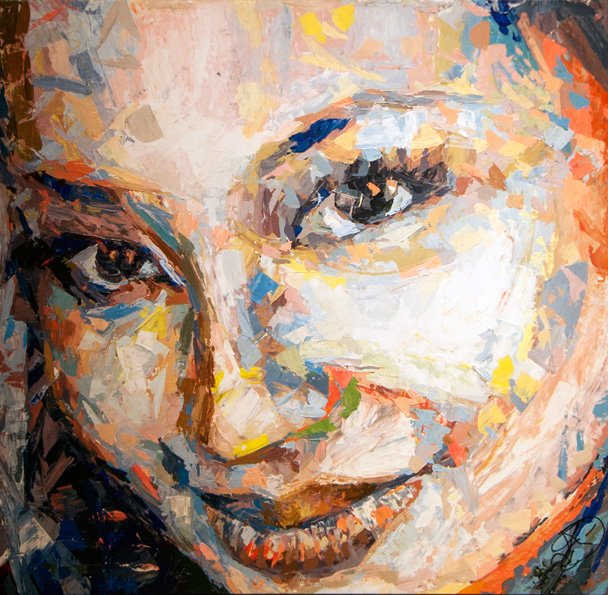Wanderlust
Start
10 October 2013End
01 November 2013Artist
Henri LamyGallery
Altro Mondo • Arte Contemporanea, 3rd Level Greenbelt 5, Ayala Center, Makati City
That a living artist, working now without escape from the updating press about art that routinely celebrates forms and manners of youth-culture, as well as the routinely disturbing news accounts of yet another potentially depressing extensional ramification of history, would declare in an artists statement that “the exhibition is about: love, and endless faith and optimism even during the hardest times” could strike many as anomalous.Technical bravura of achieving texture with acrylic aside (to my being, the least enduringly interesting aspect of any artwork, and the best know it; nor is his technique, in this show at least, consistent), Lamy’s art offers yet another reason to think about the tension between two distinctively different modal methods of clarity (abstraction and representation) out of which his art comes.
If, as Theodor Adorno famously put forth, genocide cannot be represented by any form whatsoever, the same could be argued for “love, and endless faith and optimism.” Both extremes designate representational limits. How did Lamy show the pleasant limit? He made two crucial and rare choices. Firstly, he took his subjects away from their traditional meanings; pictured here are subjects who look Third-Worldy that—drips (those that emphasize the fact that you are so not looking at Rembrandts) aside—are not subjects in the strict sense of the word: they’re neither representing their demographic nor being exhibitionally message-driven about “struggling to find relief in a material world.” In other words, he extracted the ideological from the represented.
Secondly, without denying the narrative of attention, he forestalled an end by dismantling narrative’s operation (for, unless one is willfully imaginative about these paintings, they do not tell stories). The framing of the subjects wrests them from story, and here, they begin by default and, insofar as nothing happens, they cannot end. Is there a middle, narratologically speaking? None: a critique of the delusion of success as well as portraiture’s dream. While clearly the choice is deliberate (and therefore creates meaning), the question is whether he is suggesting that such freedom happens only in art. And if only in art, why not.
While others have produced art out of the now familiar tension between abstraction and representation to think about process, time and duration, uncertainty, or present delightful, delighting explorations of the art’s formal plasticity, Lamy used the tension to show what he saw: uninterpreted, unused, unexploited. That he saw, and plainly, is the marvel, and is good reason to hesitate to call him expressionist, or plainly post-Impressionist. No doubt he is the former (post-ab-ex or pre-Impressionist) as much as the latter, and to be all three is to be none of the three. The heroic gesture as I see it—or “prophetic,” as he would choose—is the relocation of the central tension from the categorical to that between certainty and uncertainty, and to focus it there with intent but not agenda.
— Marc Gaba




















